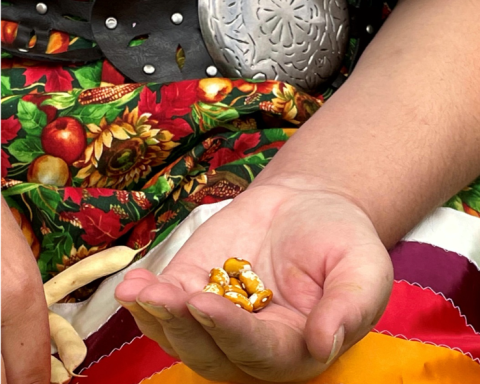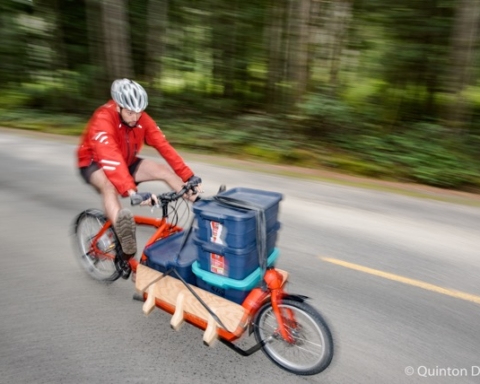Seeds of Resilience for Thriving Bioregionalism
Marjorie Harris BSc, IOIA V.O. P.Ag
Bioregionalism is a philosophical concept that promotes the harmonization of human culture and activities with those of the environmental bioregion they reside in. There is also an emphasis on local food production for local markets, including indigenous plants and animals.
The organic community has developed into a proactive global sub-culture phenomenon whose regulatory standards happen to work hand in glove in implementing some fundamental bioregionalism concepts. Case in point, the use of organic seed when and where possible.
CAN/CGSB-32.310-2015 Clause 5.3 Seeds and planting stock: Organic seed, bulbs, tubers, cuttings, annual seedlings, transplants, and other propagules shall be used…
The tenants of bioregionlism recognise the uniqueness of each ecosystem’s bioregion as defined by its natural boundaries. Often these natural boundaries are not related to national boundaries: for instance, the bio-geoclimatic subzone of the Okanagan Valley stretches through southern British Columbia into Washington state. The organic sub-culture spans the globe and in this sense the bioregion or ecoregion that is defined is the entirety of the earth system herself.
In some ways Bioregionlism harkens back to a time before modern industrialization, when food production was still predominantly local and relied on hardy regional crop varieties that were grown using traditional farming methods and largely consumed by local peoples. In that pre-industrial model, each community had its own work force that could produce enough local foods to support its local population base.
In a world comprised of unpredictable natural disasters and volatile global markets subject to politico-economic shifts, we find that the organic regulatory requirement for the use of organic seed brings the concept of “resilience” into the bioregionalism equation. On a global basis, the organic community directly supports the establishment of local seed reserves, local seed exchanges, the maintenance of open pollinated heritage varieties, the conservation of regionally hardy varieties, local seed producers, and a seed saver aware community.
This is in contrast to the reduction of seed diversity and the increasing vulnerability of seed supplies managed by the multinational conglomerates.
In the past 60 years we have witnessed a rapid consolidation of smaller regional seed companies into a handful of multinational seed producers. The vast majority of seeds are grown out in select regions of the globe and shipped back to farmers. Risks are inherent when you put all your eggs in one basket, so to speak. A traumatic disruption, such as a volcanic eruption or an untimely winter freeze could wipe out the majority of seed for one crop in a production year.
Forty percent of all hybrid onion seed grown for commercial production in North America comes from a few hundred acres in the Yuma, Arizona. Jefferson County, Oregon supplies 45% of the global market for hybrid carrot seed and supplies 55% of the US domestic market. A main carrot seed producer has reported losing his entire crop due to a winter freeze, significantly reducing seed supplies for a commercial carrot crops.
Another vulnerability that comes with consolidated seed production is hybridization which inherently limits variety and loses some plant characteristics available to open pollinated varieties. Hybrid seeds are a dead end for seed savers as progeny diverge from parent genetics after the first generation. As well, hybrids have not been selected for local characteristics and regional hardiness, as open pollinated seeds are through rogueing.
In Canada, seed production for onions and carrots is a two year process as the plants are biannual seed producers. Contrast that with the longer growing seasons of the more southern USA, where onions and carrots can be an annual crop. Under annual crop growing conditions rigorous rogueing for carrot variety cannot be conducted as only the leaf tops can be checked for shape. Here in Canada, carrots are dug up and the roots rogued out for desired characteristics and replanted the following spring as ‘stecklings,’ with seed harvested in the fall of the second year.
The organic standards provide a globally unified conversation around seed production ideals and philosophy that actively seeks to build bioregional communities with seed and food resilience at their core. The use of organic seed embodies much more than just a commercial value or niche market item as it is the ‘seed core of resilience’ for thriving bioregional communities. Without the seeds of diversity and regionalism we lose the strength of resilience in an uncertain world.
Happy seed saving!
Marjorie Harris is an organophyte, agrologist, consultant, and verification officer in BC. She offers organic nutrient consulting and verification services supporting natural systems.
Photo of leek and onion starts at a plant sale: Moss Dance
References:
1. Onions: cals.arizona.edu/fps/sites/cals.arizona.edu.fps/files/cotw/Onion_Seed.pdf
2. Carrots: oregonstate.edu/dept/coarc/carrot-seed-0
3. Carrots: www.farmflavor.com/oregon/oregon-ag-products/seed-needs/










